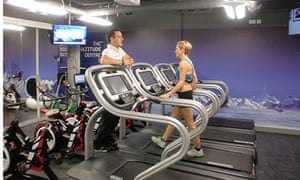On Wednesday 23 October, my partner Chris and I will take a nine-hour flight to Delhi. On Friday 25 October we’ll fly for another 2.5 hours to Bagdogra, followed by a 90-minute bus ride to the Mirik Lake resort, where we’ll stay overnight. On Sunday 27 October, we’ll have a military-style 5.30am wake-up for a 90-minute drive to Maneybhanjang (6,600ft), after which we finally reach our destination – and the start of the 100m stage race in the Himalayas.
Preparation for the Himalayan 100 is long and careful: I’ve sometimes felt I’m heading to the moon, not the mountains. There’s kit, admin and organisation, altitude, hills and, of course, mileage to take into account. Chris has spent hours on the web stocking up on plasters, painkillers, purification tablets and sleeping-bag liners. There have been travel arrangements, visa applications, jabs and flights, work and family to be juggled and planned – and that’s all before the actual training.
I’ve run 15 marathons and Chris is a seasoned triathlete, but this event, a cross between a big run challenge and an expedition, has meant we’ve had to up our preparation game. Confident of our endurance abilities, we’re still both aware that we could have done more: more miles, more hills, more healthy eating, more sleep. But it the unknowns of hills, health and altitude make this a more interesting race.
Accounts of dehydration and hospitalisation on day one of the race are harsh reminders that lack of preparation could result in a very early DNF, while jet lag and acclimatising to altitude will certainly “enhance” the first-day challenge of climbing 5,215ft on a 24-mile stretch of a cobblestone road.
To prepare for the hills, we’ve been training on the South Downs, near our home in Eastbourne. With less than a month to go, the constant climbing up steep hills took its toll on my lower limbs. A ping in my left leg in the last four miles of the Ealing half marathon left me feeling that I’d replaced my left soleus with a sharp piece of wood, and frightened me into taking four days off.
It is easy to lose perspective about training; to run injured and feel dissatisfied with mileage (I’ve done 60 a week for about six weeks). On a recent hilly climb on the Beachy Head marathon course, I locked myself into a thought process: “This is easy, this is nothing, this isn’t touching the sides compared with what’s to come … Am I doing enough …?’ Just then, a man clapped as Chris and I ran past him on the hill. I relaxed and realised it’s not that easy, and it’s definitely good enough.

As for altitude, it doesn’t discriminate. It doesn’t matter how fit you are, there’s no way of knowing how you’re going to react unless you try out some structured altitude training. The Altitude Centre at Sweat Shop in the City of London provides excellent preparation for people heading for dizzy heights of 2,500m and beyond.
“Altitude affects everything,” Alex Willis, a sports science graduate and coach at the centre who completed his first mountain marathon aged 16, told me. “Blood pressure, bowel movements, sleep, dreams (wackier), breathing, digestion. Everything,” he said. “Food will taste different and you shouldn’t drink alcohol or eat junk food.”
Training sessions in the Altitude Centre are short and sharp: Alex explained that you get more benefit from high intensity intervals, such as 10 x one minute fast with one minute recovery. Intervals when you’re oxygen deprived are a great way to boost your VO2 max without overloading your system.
As well as training at the Centre, a friend has offered us the loan of a hypoxic tent to sleep in. But if you need to train for altitude and you’re not lucky enough to have a friend with a tent, there are plenty of other options:
• For a worldwide guide, check out altitudetrainingcamps.com.
• Follow Elizabeth Egan @egansadventures on Twitter – she is an author putting together a book on altitude training venues.
• The Altitude Centre provides at-home options as well as classes and one-to-ones. (It is also offering 20% off a session at the London gym, using the code Himalayn100.)
• AcclimatiseMe also provides home altitude training in the UK.
• Ask at your local university if the sports scientists are looking for guinea pigs to train at altitude in their hypoxic chambers.
• Fiona Bugler will be blogging again next month about how she got on in the Himalayan 100.
Source: Read Full Article
